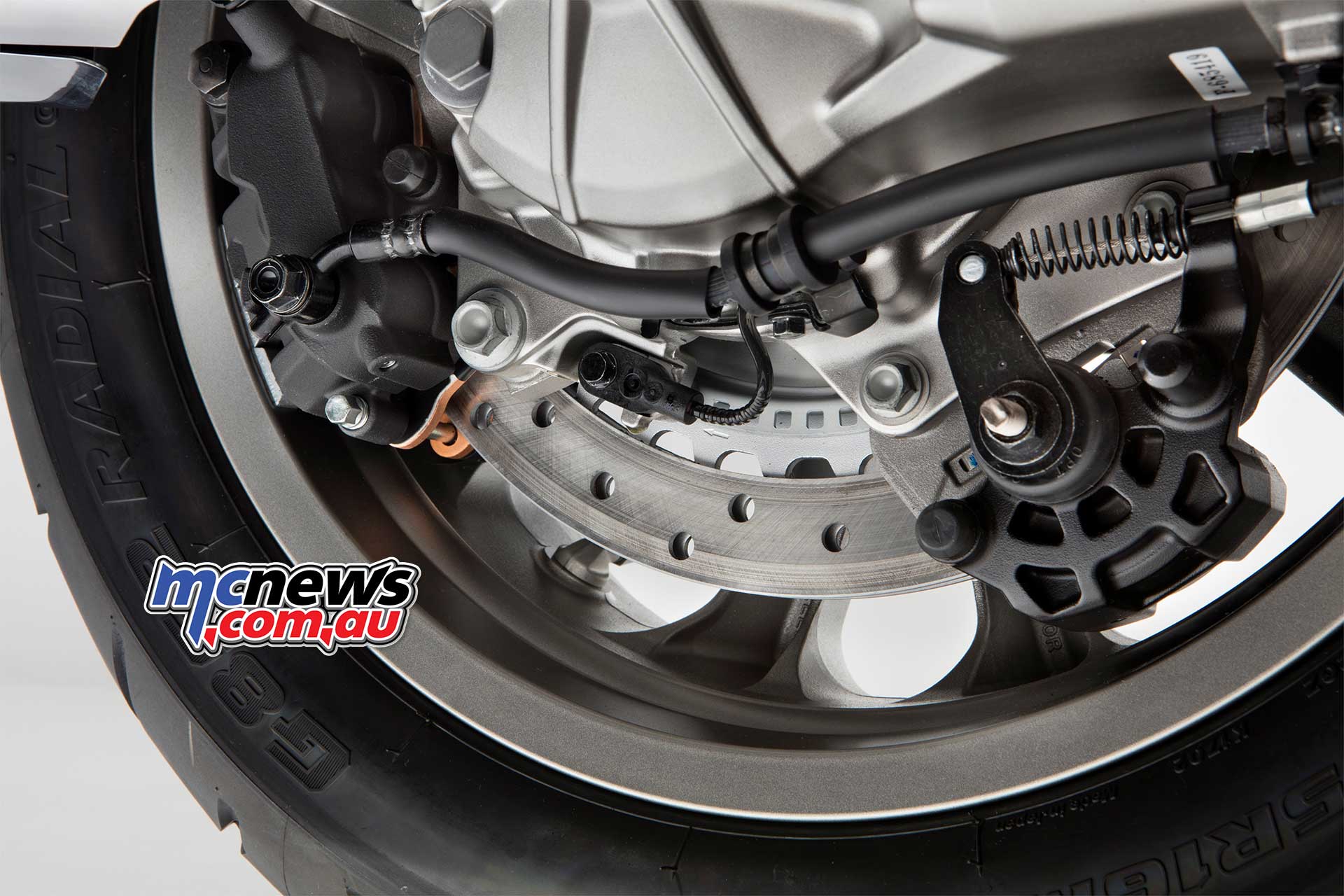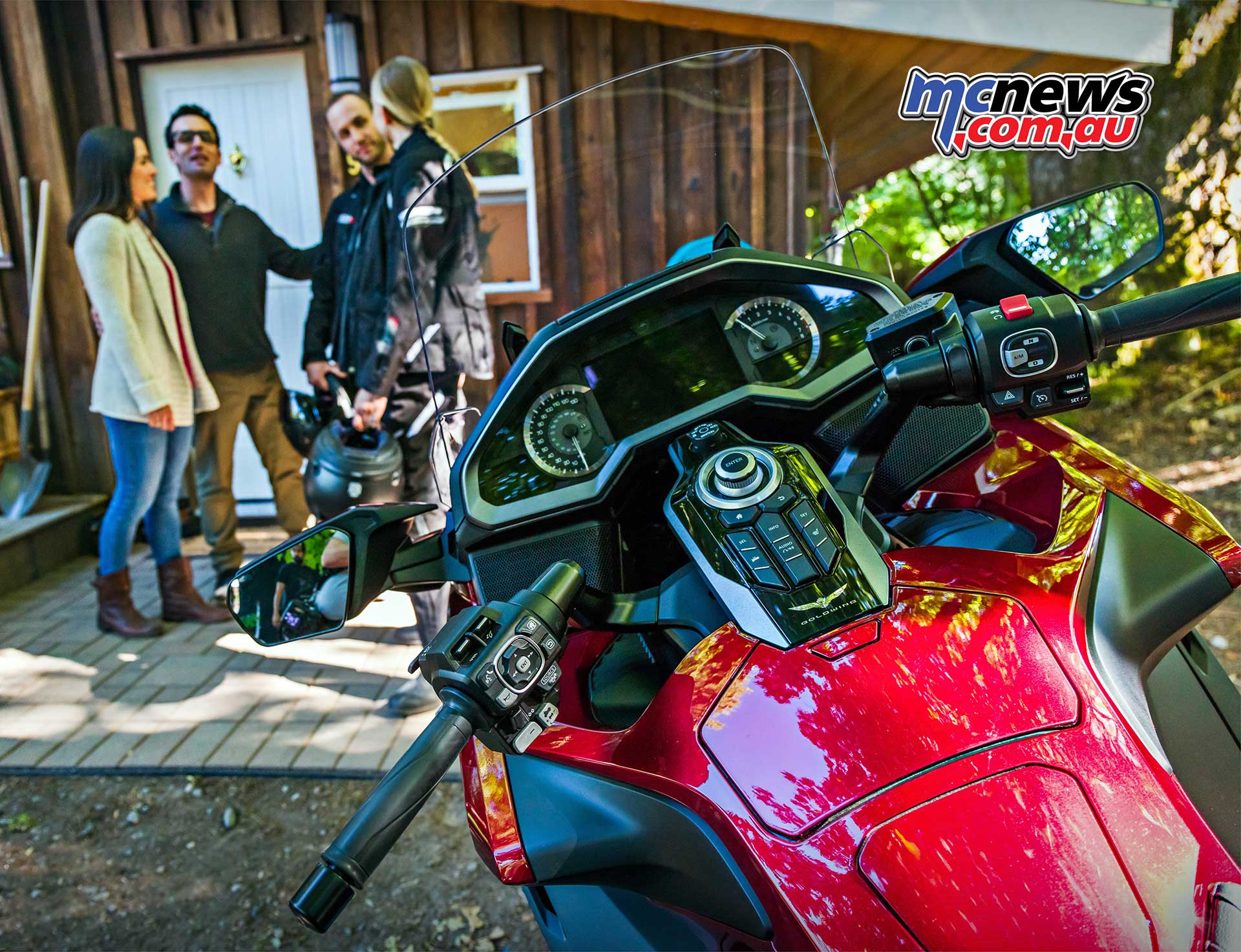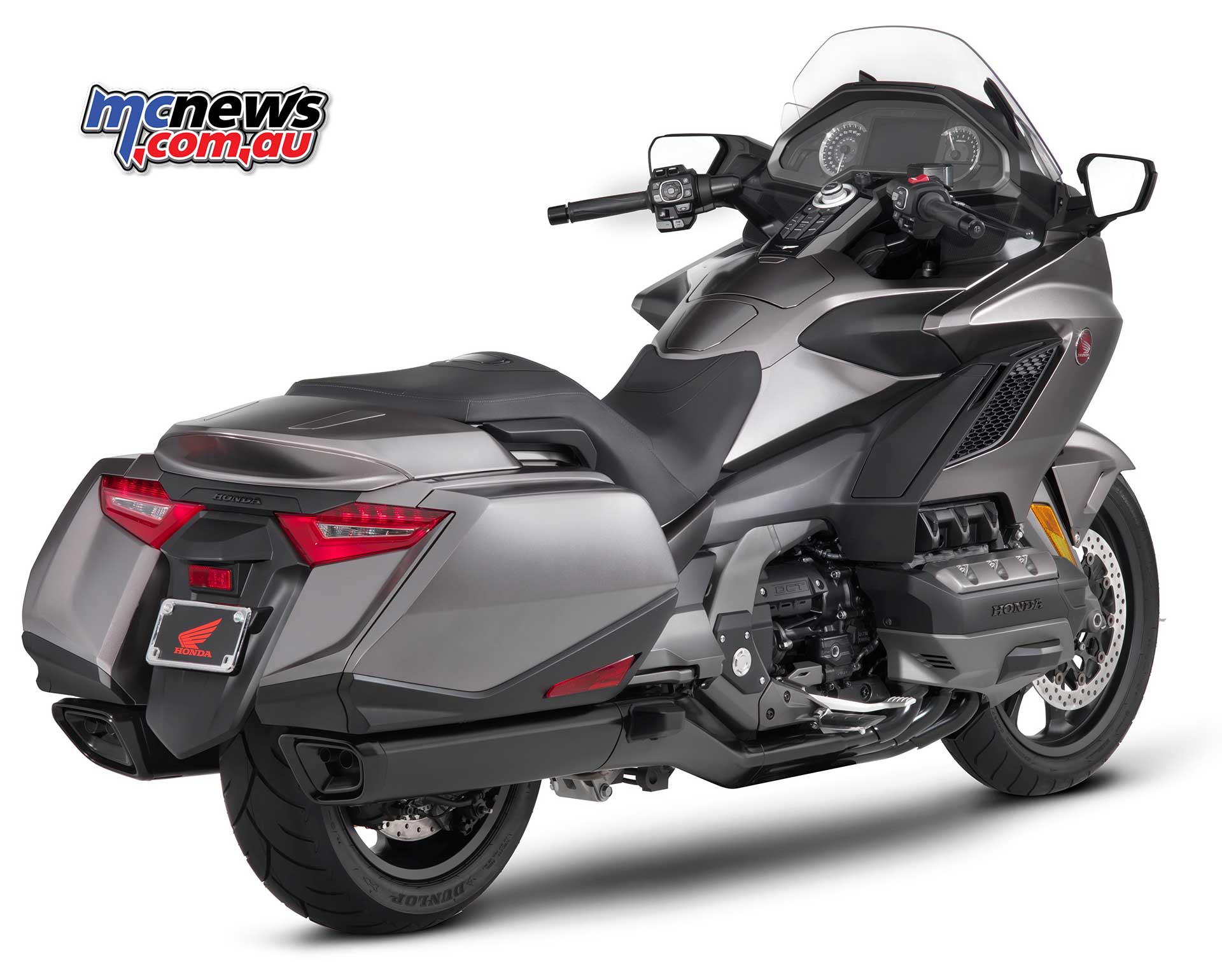2018 Honda Gold Wing Dual Clutch Transmission (DCT)
- Third-generation DCT with 7-speeds
- Smoother, quieter with faster upshifts and downshifts
- Walking mode allows machine to ‘creep’ forward or back
- The 4 riding modes also manage DCT for optimised response
Honda’s unique Dual Clutch Transmission is a natural fit for the new Gold Wing engine and development revolved around DCT as the base. This is the third all-new generation of the system and the first to have 7-speeds, specifically designed for long-distance cruising; it’s also extremely smooth and fast shifting. And lighter than the 5-speed manual transmission fitted to the previous design.
DCT delivers consistent, seamless gear changes up or down and very quickly becomes second nature in use. It uses two clutches: one for start-up and 1st, 3rd , 5th and 7th gears: the other for 2nd, 4th and 6th, with the mainshaft for each clutch located inside the other for compact packaging.
Each clutch is independently controlled by its own electro-hydraulic circuit. When a gear change occurs, the system pre-selects the target gear using the clutch not currently in use. The first clutch is then electronically disengaged as, simultaneously, the second clutch engages.
The result is a consistent, fast and seamless gear change. Furthermore, as the twin clutches transfer drive from one gear to the next with minimal interruption of the drive to the rear wheel, any gear change shock and pitching of the machine is minimised, making the change feel direct as well as smooth. Extra benefits include durability (as the gears cannot be damaged by missing a gear) impossibility of stalling, low stress urban riding and reduced rider fatigue.

In the lower speed range of the new Gold Wing’s DCT system, the ratios are close, reducing shift-shock and in the higher speed range set wider apart to reduce engine rpm. In both speed ranges comfort is improved as shifting up or down is of the highest quality.
Shift noise and shock have been addressed throughout the development of the third generation of DCT. Noise damper rubbers on both ends of the fork guide and the master arm greatly reduce any impact sound during gear changes.
A spring damper has been installed between the clutch and the main shaft in order to absorb the torque in the rotational direction, thus reducing the noise and shock of the contact between the clutch and main shaft when shifting gears.
The new Gold Wing’s DCT features a 1.8km/h forward Walking Mode with reverse of 1.2km/h, operated instantly from a +/- switch on the left handlebar.
Of the main shafts with a double tube structure, the outer main shaft connected with the even-number gears is linked to the inner shaft with a chain, by way of the gears on the counter shaft. This structure gives outer main shaft the role of the reverse idle shaft, which has resulted in a lightweight reverse mechanism with a compact structure – with no need for any reverse idle shaft.
 When activating Walking Mode the two clutches of DCT are utilised to enable moving backward with clutch #1 and moving forward with clutch #2. In this way, moving forward or backward at walking speed is now possible with only clutch control, without any need for gear shifting. Furthermore, the throttle-by-wire system controls speed by minutely controlling the clutch capacity, while maintaining a certain engine speed, assuring controllability with a sense of security in wide-ranging situations.
When activating Walking Mode the two clutches of DCT are utilised to enable moving backward with clutch #1 and moving forward with clutch #2. In this way, moving forward or backward at walking speed is now possible with only clutch control, without any need for gear shifting. Furthermore, the throttle-by-wire system controls speed by minutely controlling the clutch capacity, while maintaining a certain engine speed, assuring controllability with a sense of security in wide-ranging situations.
The 4 riding modes are interleaved with DCT. All share the same engine character, delivery and suspension settings as the MT model but add extra DCT-specific parameters. TOUR uses the default setting for smooth clutch engagement and gearshifts in AT mode, with a low-to-high rpm range for gear shifts. SPORT deploys a more direct clutch engagement, with gear shifts programmed in a mid-to-high rev range.
ECON has a soft clutch engagement, with low-to-mid rpm gear hold and default shifting feel. RAIN also operates a soft clutch, low-to-high rpm gear hold range and slower shifting in AT mode.







